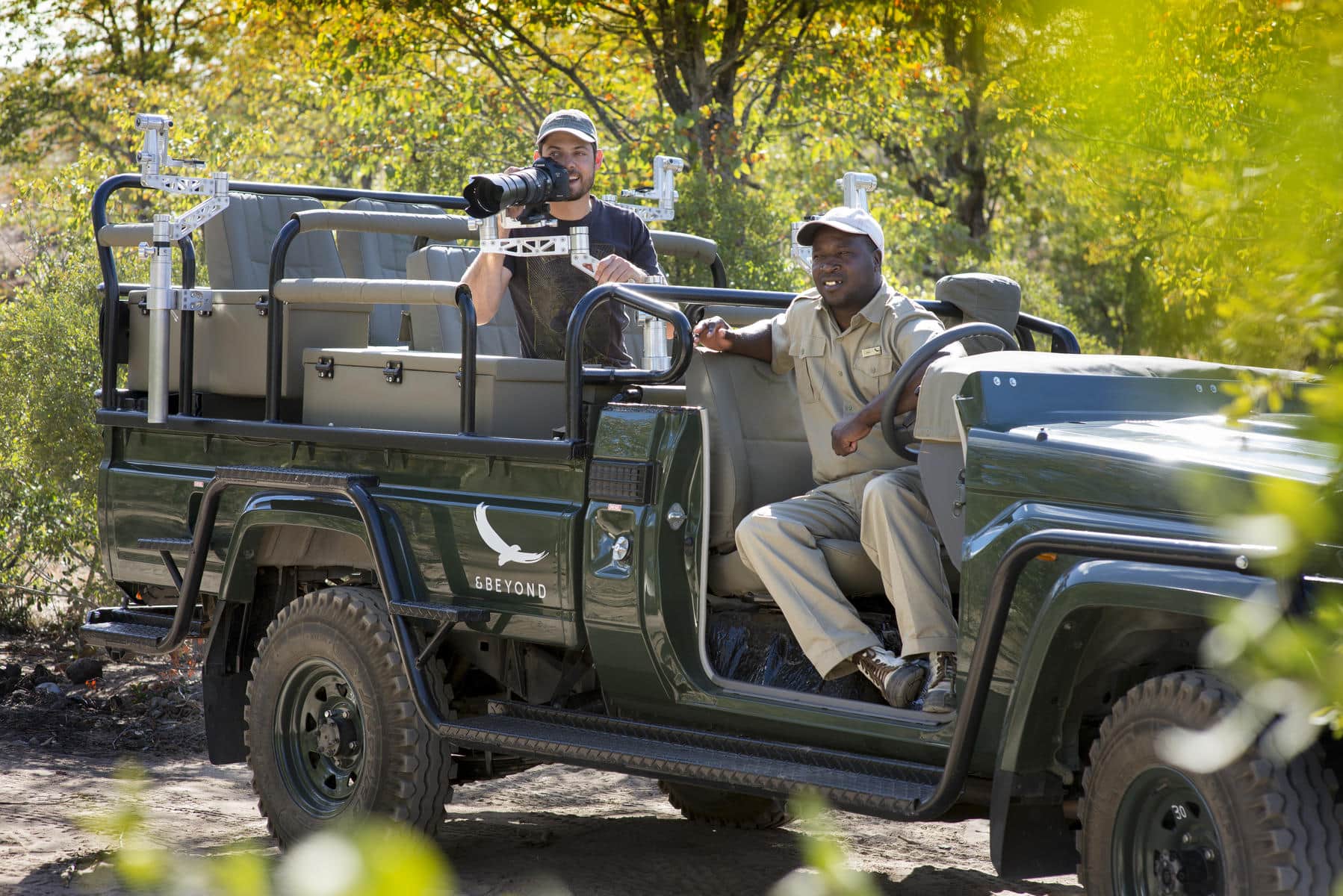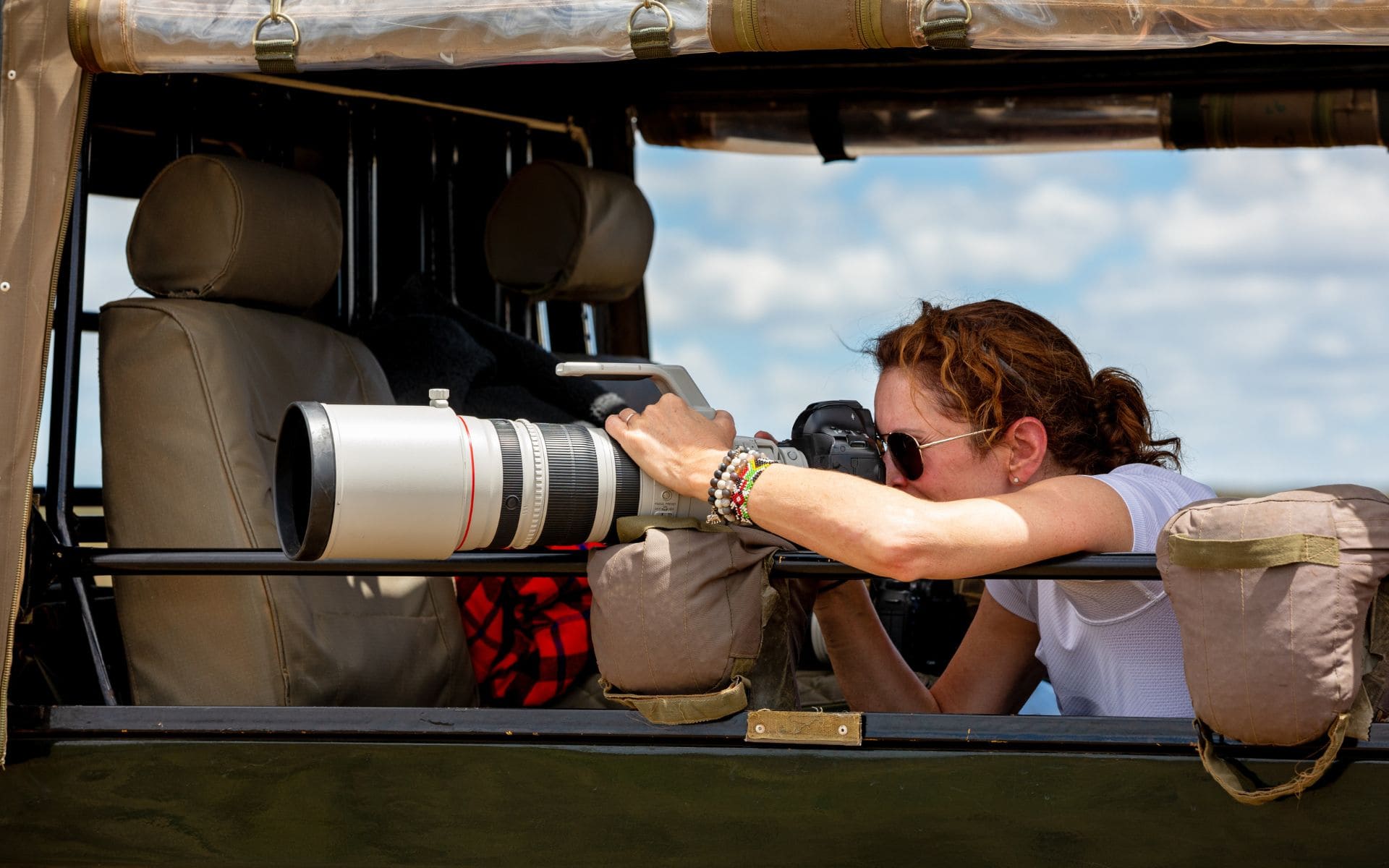Whether you’re a novice or an experienced photographer, a South African photographic safari will bring you to incredible sightings to capture. You’ll be spoilt for choice between the stunning landscapes and the myriad of wildlife.
Why Should You Go on a Photo Safari in South Africa?

Stunning Moments to Capture
Capture iconic wildlife moments in South Africa’s diverse and photogenic landscapes. From the Kruger, with its population of Big Five animals, to the mesmerising plains of the Kgalagadi, you’ll never stop wanting to raise your camera.
Expert Photography Guides
Explore private reserves with specialised photographic vehicles and expert guides. Unlike regular safaris, South African photo safaris cater specifically to the needs of photographers. Guides understand that you may need more time and patience than usual to get the perfect shot and will position vehicles for the best view.
For All Photographers
Whether you’re an amateur photographer or a professional, African photographic safaris will inspire awe thanks to the majestic landscapes and vast array of wildlife.
Diverse Landscapes
The landscapes that make up South Africa’s wilderness are diverse. Witness dramatic scenery, from savannahs to mountain backdrops, enhancing your shots.
Cultural and Wildlife Photography
Not only is South Africa one of the best wildlife destinations in the world, but it’s also home to diverse cultures. A photographic safari in South Africa will offer opportunities to combine wildlife and cultural photography in one destination.
Best Destinations for Photo Safaris in South Africa

Kruger National Park
There are many reasons why Kruger National Park is among the most famous parks in Africa. From the extensive biodiversity to the large numbers of Big Five animal species, this is a top safari destination for photographers.
Sabi Sands Game Reserve
Sabi Sands is one of the most exclusive Big Five game-viewing locations in Africa and is renowned for the frequency and quality of its leopard sightings. It’s also superb when it comes to close-up encounters with lions, cheetahs, white rhinos, elephants, and most other large ungulates common in the Kruger. For a big cat photo safari, Sabi Sands is an ideal choice.
Madikwe Game Reserve
Madikwe is one of the best places for cheetah and African wild dog sightings. Also a malaria-free Big Five destination, lions, white rhinos, and elephants are common to spot, while leopards and buffaloes are a bit rarer. With over 350 bird species, including migratory birds from November to April, Madikwe is also a fantastic spot for photographers interested in birdwatching while on their South Africa safari.
Kgalagadi Transfrontier Park
The red dunes that make up this destination are mesmerising and offer fantastic photography backdrops. The Kgalagadi features herds of gemsbok, springbok, eland, and blue wildebeest, with black-maned lions and leopards not far behind. A photo safari here offers scenes of stark contrast to the more lush and green destinations in the country.
Phinda Private Game Reserve
Phinda features seven distinct habitats, ranging from magnificent mountain ranges to expansive grasslands. A Big Five destination, Phinda also hosts over 400 species of birds, creating an ideal location for diverse photography.
5 Tips for a Photo Safari in South Africa

1. Pack the Right Equipment
Bring a sturdy camera with a telephoto lens for wildlife shots. Also, pack extra batteries and memory cards so that you don’t miss any moments.
2. Take Advantage of Golden Hour
The early morning and late afternoon offer the best lighting for photography. While on a photographic safari, your guide will ensure you’re on game drives at opportune times.
3. Work With Professional Guides
Work with guides who understand photographers’ needs. Discover Africa works exclusively with trusted partners who are experts in the field, so when you book with us, you know you’ll be guided by knowledgeable professionals. One of our safari experts will help you plan your dream South African photo safari… From the wildlife you’d love to capture to the landscapes you’d like to explore, we’ll create your perfect itinerary.
4. Have Patience
Remember, nature is unpredictable most of the time! Stay focused and ready to capture unexpected moments.
5. Protect Your Equipment
Pack gear bags to shield equipment from dust and moisture.